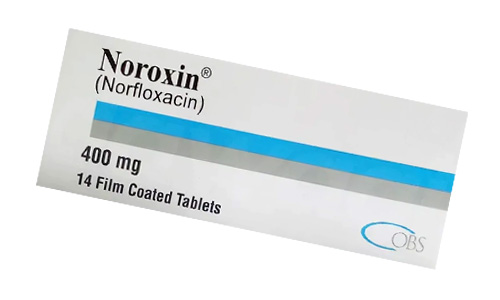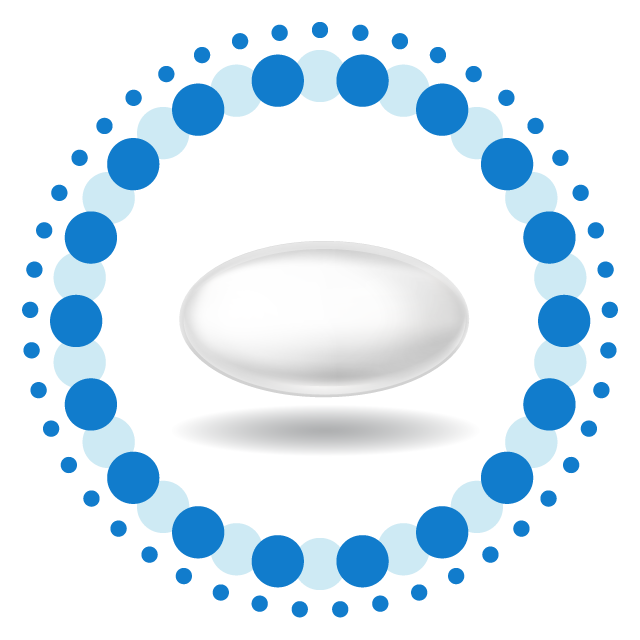Noroxin Prescribing Information
Noroxin is a brand name for the medication known as norfloxacin. Norfloxacin is an antibiotic that belongs to the class of drugs known as fluoroquinolones. It is used to treat various bacterial infections, primarily those affecting the urinary tract and prostate.
Antibiotic works by inhibiting the growth and multiplication of bacteria. It is effective against a wide range of bacteria, including those responsible for urinary tract infections (UTIs), gonorrhea, and certain types of gastrointestinal infections.

Uses of Noroxin
Noroxin is an antibiotic medication primarily used to treat various bacterial infections. Some common uses include:
- Urinary Tract Infections (UTIs): Noroxin is often prescribed to treat UTIs, including cystitis (bladder infection) and pyelonephritis (kidney infection). It can be effective against the bacteria that commonly cause these infections.
- Prostatitis: Medicine can be used to treat bacterial prostatitis, which is an infection or inflammation of the prostate gland. It may be prescribed as part of the treatment regimen for this condition.
- Gonorrhea: Noroxin can be used to treat uncomplicated gonorrhea, a sexually transmitted infection caused by the bacterium Neisseria gonorrhoeae.
- Gastrointestinal Infections: In some cases, Noroxin may be used to treat certain gastrointestinal infections caused by susceptible bacteria. However, it's not typically the first choice for these infections, and other antibiotics may be preferred.
Dosage
The dosage of Noroxin can vary depending on the type of infection being treated, the severity of the infection, and individual factors. The following are general guidelines for typical dosages:
Urinary Tract Infections (UTIs):
- Uncomplicated UTI: The usual adult dose is 400 mg taken orally every 12 hours for 3 days.
Prostatitis:
- Acute Bacterial Prostatitis: The usual adult dose is 400 mg taken orally every 12 hours for 28 days.
Gonorrhea:
- Uncomplicated Gonorrhea: A single 800 mg dose is often prescribed as a one-time treatment.
- Gastrointestinal Infections: Dosages for gastrointestinal infections can vary widely depending on the specific condition and bacterial strain involved.
Noroxin should be taken with a full glass of water and can be taken with or without food. Avoid taking antacids, mineral supplements, and other products containing aluminum, calcium, magnesium, or iron within 2 hours before or after taking tablets, as these can interfere with its absorption.
Side Effects of NoroxinNoroxin is generally well-tolerated by most people, but like all medications, it can have side effects. Common side effects may include:
- Nausea and Vomiting: Upset stomach, nausea, and vomiting are relatively common side effects of Noroxin. Taking the medication with food or a full glass of water may help alleviate these symptoms.
- Diarrhea: Antibiotic can sometimes disrupt the normal balance of bacteria in the digestive system, leading to diarrhea.
- Headache: Some people may experience headaches as a side effect of Noroxin.
- Dizziness or Lightheadedness: Norfloxacin can cause dizziness or lightheadedness, which may be more likely when standing up quickly. Be cautious when getting up from a sitting or lying position, especially if you feel dizzy.
- Rash: Skin rashes are a possible side effect, though they are less common.
- Tendon Problems: Fluoroquinolone antibiotics have been associated with an increased risk of tendon problems, including tendonitis and tendon rupture. This risk is generally higher in older adults, people taking corticosteroid medications, and those with a history of tendon disorders.
- Central Nervous System (CNS) Effects: Rarely, Noroxin can cause CNS side effects such as confusion, hallucinations, anxiety, and restlessness. If you experience any of these symptoms, seek medical attention.
- Photosensitivity: Drug can make your skin more sensitive to sunlight, increasing the risk of sunburn. Avoid prolonged sun exposure and use sunscreen while taking this medication.
- Allergic Reactions: Although rare, allergic reactions to Noroxin can occur. Signs of an allergic reaction may include hives, difficulty breathing, swelling of the face, lips, tongue, or throat. Seek immediate medical attention if you experience any of these symptoms.
Interaction with other drugs
Noroxin can interact with other drugs and substances, potentially affecting their effectiveness or increasing the risk of side effects. Here are some important drug interactions to be aware of:
- Antacids, Minerals, and Supplements: Medicament should not be taken within 2 hours before or after consuming antacids containing aluminum, calcium, magnesium, or iron. These products can interfere with the absorption of Noroxin and reduce its effectiveness.
- Warfarin and Other Anticoagulants: Noroxin can enhance the effects of anticoagulant medications like warfarin, potentially increasing the risk of bleeding.
- Non-Steroidal Anti-Inflammatory Drugs (NSAIDs): Concurrent use of Noroxin with NSAIDs like ibuprofen or naproxen may increase the risk of central nervous system (CNS) side effects, including seizures and CNS stimulation.
- Corticosteroids: Combining Noroxin with corticosteroid medications can increase the risk of tendon problems, such as tendonitis and tendon rupture.
- Theophylline: Medicine can increase blood levels of theophylline, a medication used to treat asthma and other respiratory conditions. This can lead to theophylline toxicity, so careful monitoring of theophylline levels and adjustment of the dosage may be necessary.
- Caffeine: Antibiotic may enhance the effects of caffeine, potentially leading to nervousness, restlessness, and an increased heart rate.
- Drugs That Affect Heart Rhythm: Noroxin can prolong the QT interval on the electrocardiogram, potentially increasing the risk of abnormal heart rhythms. Therefore, caution should be exercised when using remedy with medications that can also affect heart rhythm, such as certain antiarrhythmics, antipsychotics, and tricyclic antidepressants.
- Other Antibiotics: Concurrent use of Norfloxacin with other antibiotics, especially those in the same class (fluoroquinolones), should be avoided due to the potential for additive side effects.
- Methotrexate: Noroxin may increase blood levels of methotrexate, a medication used for various medical conditions, including cancer and autoimmune diseases. This can lead to methotrexate toxicity, so close monitoring is necessary if you are taking both medications.
- Multivitamins and Supplements: Certain multivitamins and supplements that contain minerals like calcium, magnesium, iron, and zinc can reduce the absorption of Noroxin, potentially making it less effective.
What to avoid while on Noroxin
While taking Noroxin, there are certain things you should avoid to ensure the medication's effectiveness and minimize the risk of side effects. Here are some important precautions to take:
- Antacids and Mineral Supplements: Avoid taking antacids or mineral supplements that contain aluminum, calcium, magnesium, or iron within 2 hours before or after taking Noroxin. These products can interfere with the absorption of Norfloxacin, reducing its effectiveness.
- Dairy Products: Dairy products, such as milk, yogurt, and cheese, can also interfere with the absorption of Noroxin. To ensure the medication is absorbed properly, avoid consuming dairy products within 2 hours before or after taking the medication.
- Caffeine: Noroxin may enhance the effects of caffeine, leading to nervousness, restlessness, and an increased heart rate. Limit your caffeine intake while taking Noroxin, especially if you are sensitive to caffeine.
- Sun Exposure: Norfloxacin can make your skin more sensitive to sunlight, increasing the risk of sunburn. Avoid prolonged sun exposure and use sunscreen or protective clothing when outdoors.
- Alcohol: While there is no specific interaction between Noroxin and alcohol, it's generally a good idea to limit alcohol consumption when you are on antibiotics. Alcohol can potentially affect your body's ability to metabolize the medication and may worsen certain side effects.
- Activities Requiring Mental Alertness: Noroxin can cause dizziness or lightheadedness in some individuals. Avoid activities that require mental alertness, such as driving or operating heavy machinery, if you experience these side effects.
- Tobacco and Nicotine Products: Smoking or using nicotine products may reduce the effectiveness of Noroxin. It's advisable to avoid smoking while on the medication.
- Tanning Beds and UV Lamps: Like natural sunlight, tanning beds and UV lamps can increase your risk of sunburn while on Noroxin. It's best to avoid tanning beds and UV lamps during your treatment.
- Highly Acidic or Alkaline Foods: Extremely acidic or alkaline foods and beverages can affect the absorption of Noroxin. While it's not necessary to make significant dietary changes, try to consume a balanced diet.
Contraindications of Noroxin
Noroxin has several contraindications, which are specific situations or medical conditions in which the use of this medication is not recommended or should be avoided due to the potential for serious adverse effects or ineffectiveness. Here are some contraindications:
- Hypersensitivity: Medicament should not be used if you are hypersensitive or allergic to norfloxacin, other fluoroquinolone antibiotics, or any of the medication's components. Allergic reactions can be severe and may include symptoms such as hives, difficulty breathing, and swelling of the face, lips, tongue, or throat.
- Tendon Disorders: Antibiotic can increase the risk of tendonitis and tendon rupture, particularly in older adults, individuals taking corticosteroid medications, and those with a history of tendon problems. If you have a history of tendon disorders, Noroxin should generally be avoided.
- Pregnancy and Breastfeeding: Noroxin is generally not recommended during pregnancy and breastfeeding unless the potential benefits outweigh the risks. Fluoroquinolone antibiotics can have adverse effects on fetal development and may pass into breast milk.
- Children and Adolescents: Norfloxacin is typically not recommended for use in children and adolescents, as it may affect bone and cartilage development. Safer alternatives are often preferred for this age group.
- Myasthenia Gravis: Medicine may worsen the symptoms of myasthenia gravis, a neuromuscular disorder. It should be avoided in individuals with this condition.
- Seizures: Norfloxacin may lower the seizure threshold, increasing the risk of seizures in some individuals. It should be used with caution in people with a history of seizures or other factors that may predispose them to seizures.
- Renal Impairment: Noroxin is primarily excreted by the kidneys. People with severe renal impairment or those undergoing hemodialysis should use Norfloxacin with caution and under close medical supervision, as dosage adjustments may be necessary to prevent drug accumulation.
- Cardiac Arrhythmias: Medicament can prolong the QT interval on an electrocardiogram (ECG), which may increase the risk of abnormal heart rhythms. It should be used with caution in individuals with a history of cardiac arrhythmias or other factors that may prolong the QT interval.
- Neurological and Psychiatric Conditions: Noroxin may exacerbate central nervous system (CNS) effects, including confusion, hallucinations, anxiety, and restlessness. It should be used with caution in individuals with preexisting neurological or psychiatric conditions.
Pregnancy and Noroxin
Noroxin is generally not recommended for use during pregnancy unless the potential benefits clearly outweigh the risks. This recommendation is based on concerns about the potential adverse effects of fluoroquinolone antibiotics on fetal development.
Here are some important considerations regarding Noroxin and pregnancy:
- Fetal Development: Animal studies have shown that fluoroquinolone antibiotics, including norfloxacin, can cause damage to developing cartilage in animals. Although these findings may not directly translate to humans, there is a theoretical risk of harm to the developing fetus.
- Limited Data: There is limited human data on the use of Noroxin during pregnancy, primarily due to ethical concerns about conducting controlled clinical trials in pregnant women. As a result, the full extent of potential risks is not well understood.
- Risk vs. Benefit Assessment: If a pregnant woman has a severe bacterial infection that cannot be effectively treated with other antibiotics and poses a significant risk to her health and the health of the fetus, a doctor may consider the use of Noroxin after carefully weighing the potential risks and benefits.
- Breastfeeding: Noroxin can pass into breast milk, potentially exposing the infant to the medication. If Noroxin is used by a breastfeeding mother, it's essential to monitor the infant for any adverse effects. In some cases, alternative antibiotics with a lower risk of passing into breast milk may be preferred.
» Drug Uses (format pdf, 0.2 Mb)



